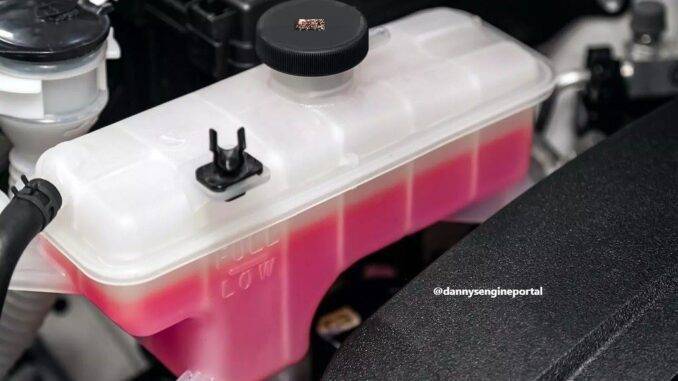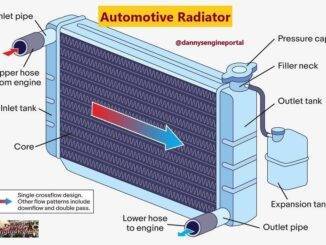
A coolant recovery tank, is a tank designed to collect hot coolant from the radiator, as the coolant expands.
However, as the engine cools down, the coolant in the rad contracts, creating a vacuum in the rad.
As a result, this vacuum draws coolant back into the rad. So, it’s full at all times, preventing air locks.
Another function of the coolant recovery tank is, to remove air bubbles from the cooling system.
Note: Coolant Recovery Tank and Coolant Expansion Tank, are all just different names, for basically the same thing. However, a Coolant Overflow Tank is different.
So, coolant without air bubbles, is much more efficient than coolant with air bubbles. As, it absorbs heat much faster. With no recovery tank, air is sucked into the rad instead of coolant. And, this will cause air locks and the formation of rust. Then, if rust forms inside the cooling system, you will have to flush out the system and replace the coolant. One fairly common sign, is an engine that’s overheating.
Another common cause can be, a bad rad cap.
Although the tank may be full, the rad itself is empty or very low. Most often because, the rad cap failed. So, the rad cap isn’t allowing the system, to draw coolant back into the engine, during cool down.
Before, The Coolant Recovery Tank
Traditional rads, use a rad cap that holds pressure, until it reaches its, preset pressure threshold. Once the cooling system pressure, exceeds the cap rating, the cap releases coolant, until the pressure falls. In older vehicles, without a coolant recovery tank, the excess coolant was dumped onto the ground.
So, the next time the engine starts, with cold coolant the coolant level in the rad is low. Then, the remaining coolant would expand, and fill the entire rad, once the engine warmed up again.
The Basic, Coolant Recovery Tank
So, to keep the rad full at all times, car makers developed a new rad cap and installed a tank. The rad cap operates just like the older versions, to open and bleed off excess coolant. But, instead of letting the coolant spill onto the ground, the coolant drained into a recovery tank. So, the cap operates just like the previous caps. However, as the engine cools and the coolant contracts, it creates a vacuum inside the rad.
A vent mechanism in the cap, allows the vacuum to draw coolant back into the rad, from the recovery tank. The recovery tank in these vehicles, are simply storage containers. So, they are not under pressure, at any time.
The Pressurized, Coolant Recovery Tank
As car makers moved to, transverse mounted engines and swept hood designs, they faced an under hood space problem. One way to gain more space, was to move the rad forward. Unfortunately, that limited access to the rad cap. So, car makers decided to move the rad cap, from the rad to the recovery tank. In this design, the rad, upper rad hose, drain hose and recovery tank, are all under pressure. The recovery tank is now, a much stronger design and can handle, more than 15-psi.
Coolant Recovery Tank Leaks
Both the non-pressurized and pressurized tanks, can develop engine coolant leaks along the seams. The leaks are most noticeable, when the coolant is hot. So, you may face a condition where, you refill the coolant tank and drive the vehicle. Then, when the vehicle cools down it’s low on coolant, with no sign of a leak at the tank.
Conclusion
So, the use of a coolant recovery tank prevents, a swelled cooling system, from venting onto the ground. Also, the use of an expansion tank, with a conventional rad, adds additional coolant to the system.
BY DANNY BENDER




